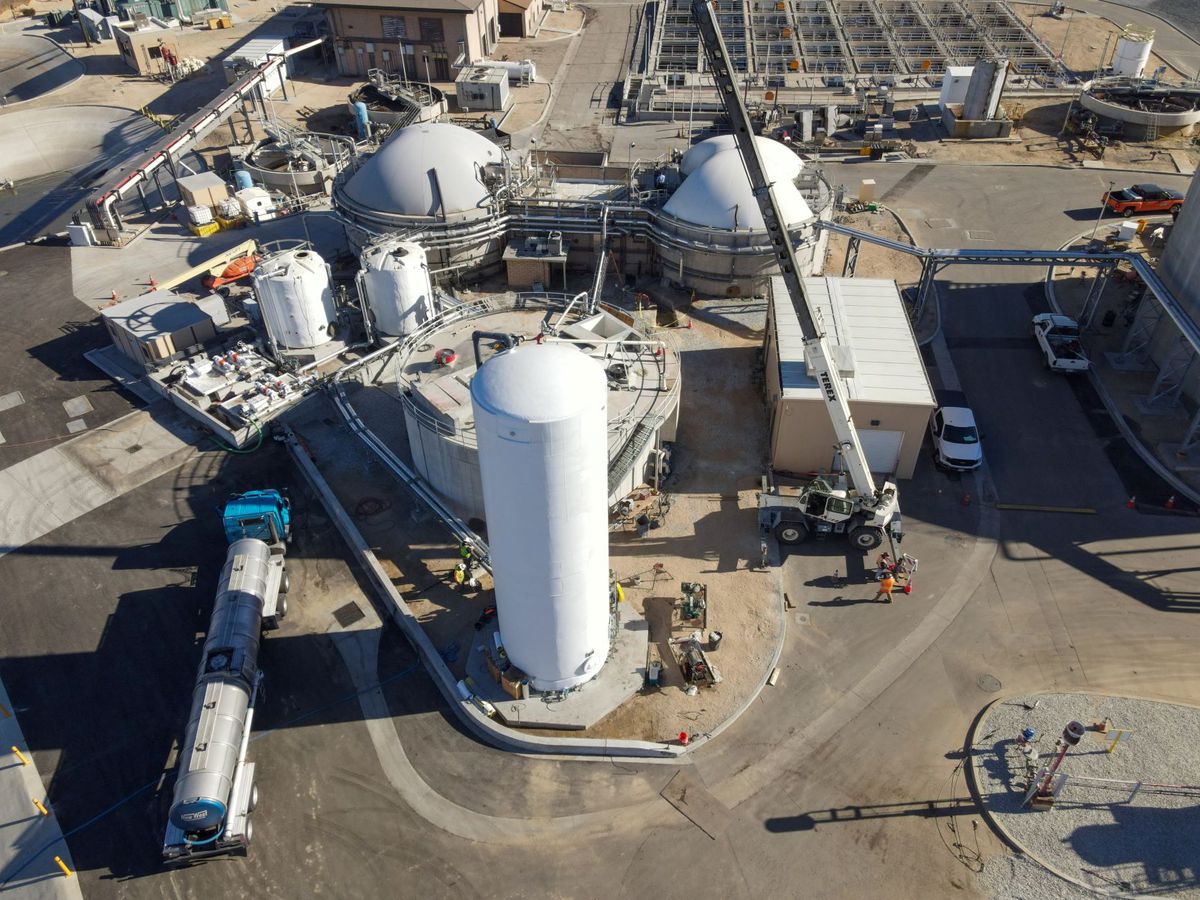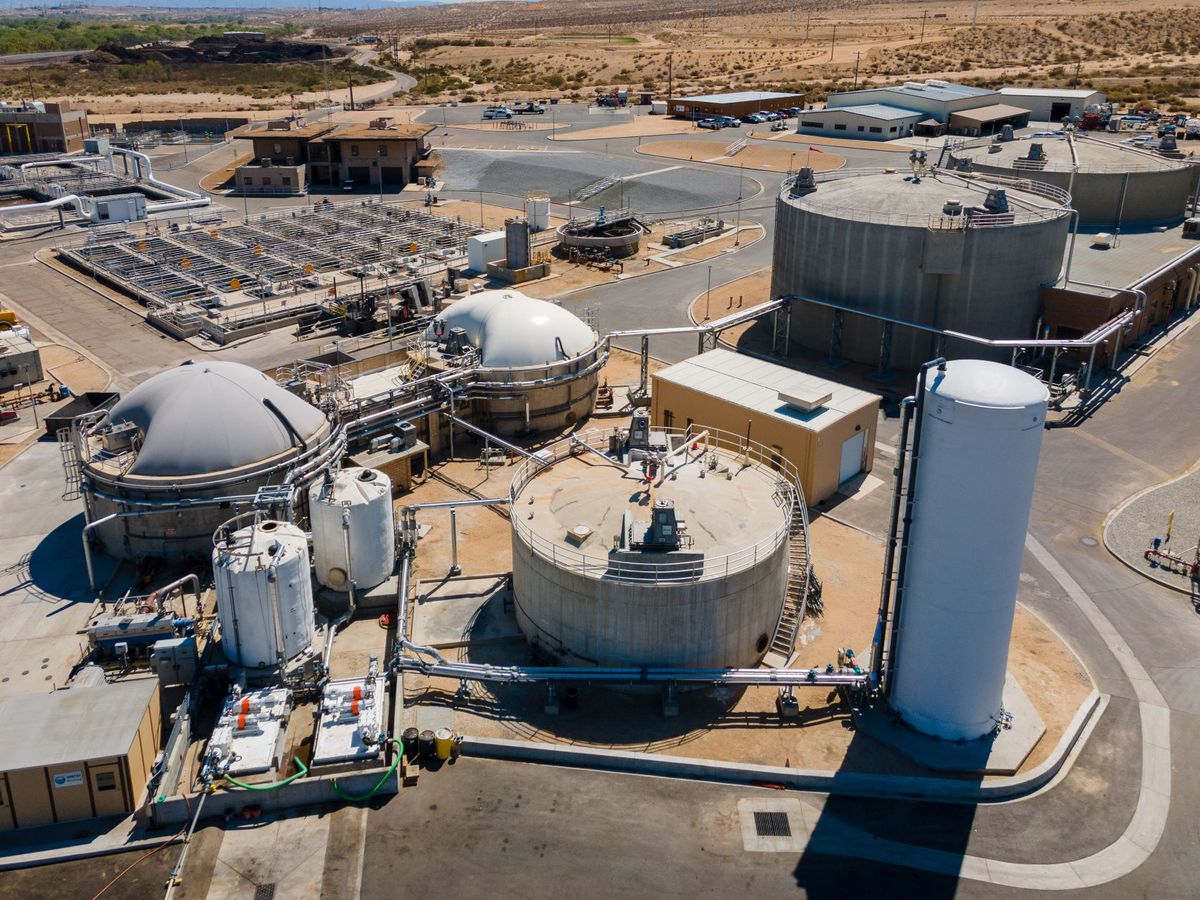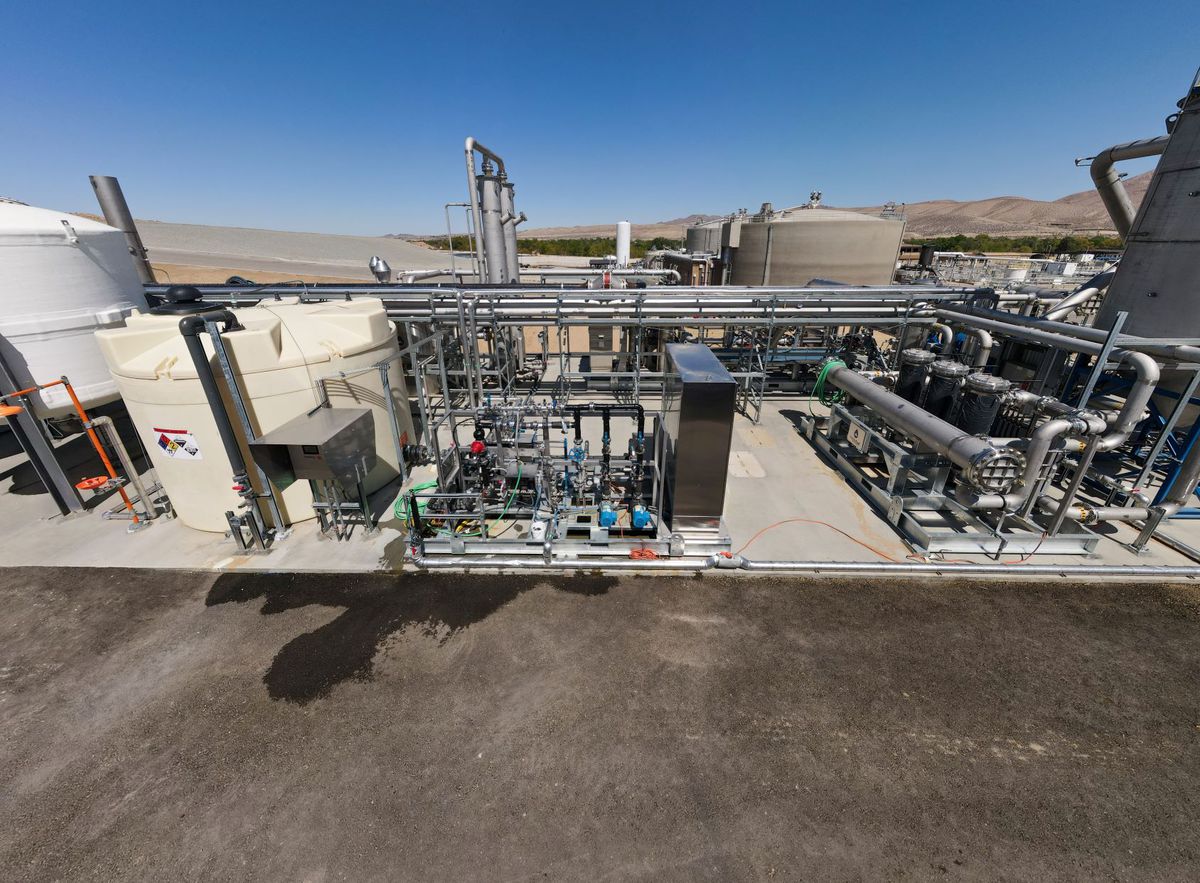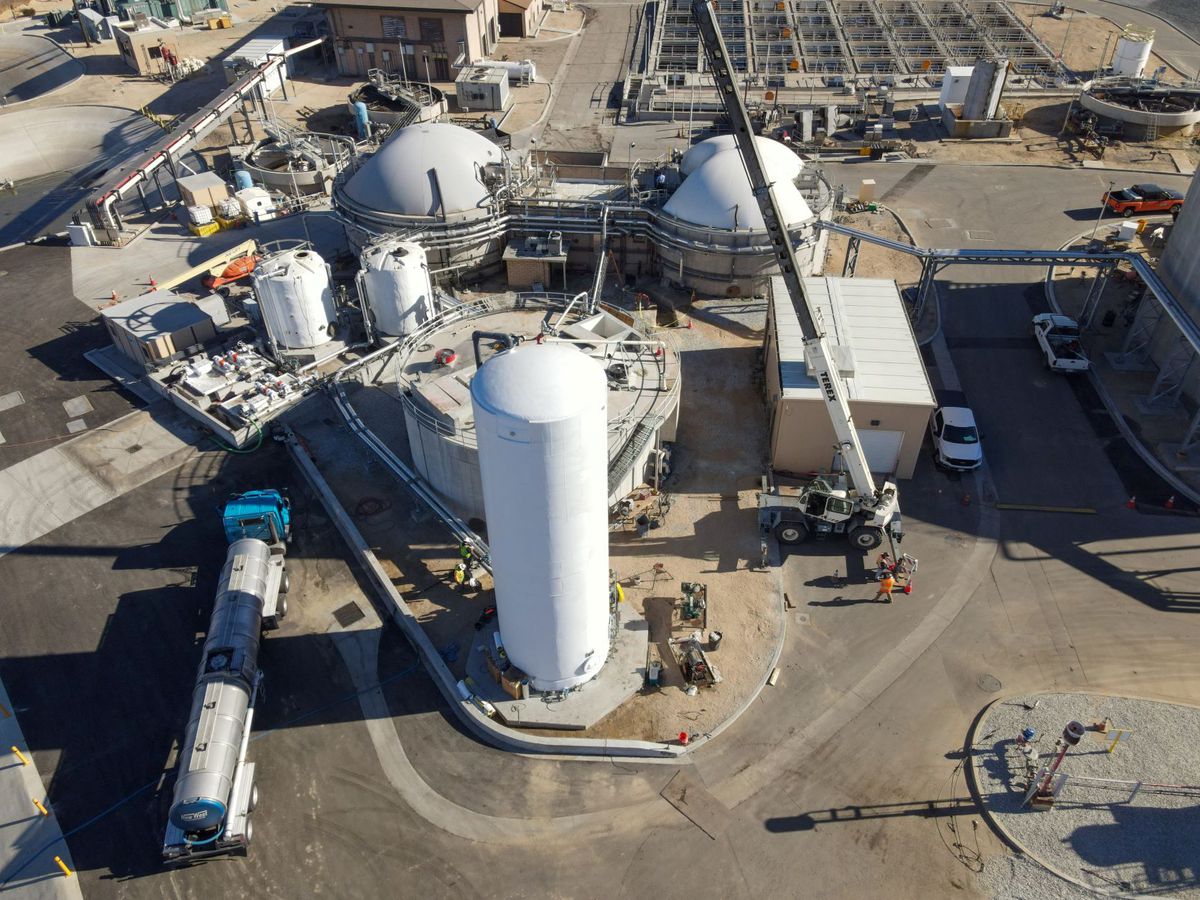How Clean Water Agencies Can Move from Net-Zero to Carbon-Negative to Create a Sustainable Future
- December 6, 2022
- Margaret Laub

In the 50 years since the passage of Clean Water Act, clean water agencies are continuing to innovate and address the nation’s environmental concerns in new ways. One of those leading the way is Victor Valley Wastewater Reclamation Authority (VVWRA) in Victorville, California. This forward-thinking agency implemented the state’s first project to co-digest food waste and biosolids and upgrade the biogas to renewable natural gas (RNG) for utility pipeline injection.
This has allowed VVWRA to achieve not just net-zero emissions, but net negative emissions—in other words, its operations take more greenhouse gases from the atmosphere than they emit.
In the process, VVWRA has also increased its resilience, reduced capital funding requirements, and created alternative revenue streams.
First Phase: Digester Upgrades
Back in 2015, VVWRA wanted to use its biogas to provide its own heat and power needs. But as a 12 MGD facility with several out-of-service digesters, the agency had to find a way to increase feedstock and their digestion capacity to become energy neutral. And they had to finance the project creatively.
VVWRA partnered with Anaergia to arrange financing through a public-private partnership (P3), reducing risk for the agency. while preserving public funds for other community needs. There was no cost to VVWRA or its ratepayers.Using this P3 financing, VVWRA initially brought a mothballed digester back online, upgrading it with Anaergia’s Omnivore® high-solids digestion technology. The enhancement allowed VVWVRA to return the unit to service at significantly increased capacity (without the need for new digester construction), so they could receive and process energy-dense food waste in addition to indigenous sludge. Anaergia also installed high-strength waste (HSW) receiving, enabling VVWRA to take in up to 20,000 gallons of food scraps per day.
As the facility’s biogas production increased, Anaergia provided two 800-kW dual-fuel combined heat and power (CHP) modules, which began operation in 2016. The system was sized to use all the facility’s biogas and meet 100% of VVWRA’s heat and electricity needs. As a result, VVWRA realized significant utility cost savings and was less dependent on the power grid.
Landfill Diversion Mandates Come into Play
In 2015, California passed legislation to reduce methane emissions, mandating the diversion of 75% of organic wastes from landfills by 2025. With VVWRA’s success integrating HSW digestion at its plant, the agency demonstrated that water resource recovery facilities could be ideal outlets for converting this landfill-diverted food waste into renewable energy–and generate benefit for the agency. The California State Water Resources Control Board would in fact confirm there is sufficient capacity within the state’s existing wastewater digesters to process at least half of landfill-bound food waste. Jared Blumenfeld, California’s Secretary for Environmental Protection, promoted this solution calling it, “a triple threat against climate change” that “can reduce organic waste in landfills while cutting greenhouse gas emissions and helping to clean wastewater.”
Now with excess digestion capacity, VVWRA saw an opportunity: It might make economic sense to produce even more biogas. They worked with Anaergia on a cost-benefit analysis and determined that the best way to use increased biogas would be to upgrade it to RNG for injection into the regional gas utility pipeline. They would use conventional natural gas in their combined heat and power system, and maximize the RNG sent to the gas grid to take advantage of federal and state renewable fuel credits. The sale of RNG would more than offset the cost of natural gas purchases for CHP. And this approach would have the added benefit of generating carbon-negative fuel, an invaluable tool in achieving carbon-neutrality goals and mitigating climate change.
How the P3 Works
The expanded P3 funded significantly increased liquids receiving, storage, and high-solids mixing in each digester. Anaergia also delivered conditioning, RNG upgrading, and the utility interconnection infrastructure. Though not needed for the project, ancillary capital improvements, such as dedicated digester feed lines, were provided to support overall facility operations and address capital improvement needs. The project tripled VVWRA co-digestion and associated biogas production.
Under the P3, Anaergia provided design, construction, and financing. Anaergia owns and operates the biogas utilization facility, located on a parcel leased by Anaergia from VVWRA. Anaergia receives all biogas produced at VVWRA and provides the conditioning and upgrading to produce pipeline-quality RNG. The resulting carbon-negative RNG is 99% methane and delivered to the gas utility point of receipt for pipeline injection and sale. Anaergia manages the interconnection and offtake agreements, as well as the necessary registration with state and federal renewable fuel standard programs, which maximize renewable energy credits and RNG value.
VVWRA will continue to own and operate the newly upgraded digesters and ancillary upgrades. Given the well-established co-digestion program, VVWRA maintains responsibility for obtaining the organic feedstock, charging about $0.05 per gallon tipping fees for the HSW it receives. VVWRA continues to benefit from energy resilience and power grid independence with its CHP system using natural gas. In addition, VVWRA has added revenue streams: lease payments from Anaergia, additional tipping fees, and shares in revenues from the RNG sales.
The facility is now producing more than 340,000 mmbtu of RNG per year. One of the best things about the P3 financing is that it allowed the construction of the RNG infrastructure to be completed in just 15 months, and RNG has been injected into the gas utility pipeline since early 2022.
Benefits for Ratepayers and the Environment
VVWRA’s Victorville project stands as a model for any water resources recovery facility to emulate. With financing through public-private partnership, many facilities can secure capital improvements and maximize value derived from biogas—all with little risk, in a short period of time, and without significant impacting existing operations or facility footprints.
“This project is really a cutting-edge example of how to effectively manage waste as a valuable resource, with the added benefit of doing good for the environment,” said Darren Poulson, VVWRA’s General Manager. “It not only gives us energy resilience, independence from the power grid, and increased capacity to serve our community, it also gives us a source of revenue.” Best of all, these upgraded operations create revenue that reduces expenses for ratepayers, and can fund future capital projects–all while doing good for the environment.
Margaret Laub, is a Project Development Manager for Anaergia Inc, based in Carlsbad, California.




JOIN US IN THE FIGHT AGAINST CLIMATE CHANGE
Chat with us to discuss how we can work together to help communities, cities, industries to turn their waste into renewable fuel.

